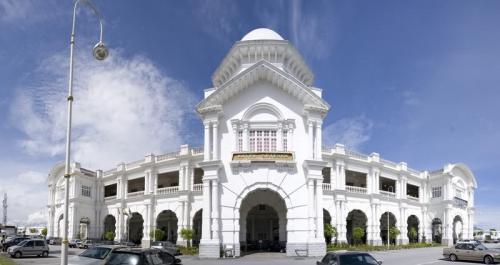
Gopeng
Aug 29 - 2022

The state of Perak in Malaysia is headquartered in Ipoh. Nearly 180 kilometres north of Kuala Lumpur it is situated by the Kinta River and 123 kilometres southeast of George Town in neighbouring Penang. Ipoh was the fourth most populous city in Malaysia as of 2010 with a population of 657,892.
Ipoh was first a village, but once significant tin resources were found nearby in the 1880s, it grew quickly. It was Selangor, Negeri Sembilan, and Pahang's second-largest town in the Federated Malay States by 1895, which also included that town. In 1988, Ipoh was proclaimed a city. But the city saw decades of deterioration and neglect once its tin resources were exhausted and tin prices fell in the 1970s.
The preservation of Ipoh's British colonial-era architecture has substantially increased the city's appeal as a vacation spot in recent years. The city is renowned for its cuisine as well as for its landscape, which includes limestone hills and caverns where Buddhist temples have been constructed. In addition, Ipoh has continued to uphold its standing as one of Malaysia and Asia's cleanest cities.
Due to its strategic location between Kuala Lumpur and George Town and the fact that both the North-South Expressway and the West Coast Line pass through the city, Ipoh has become a significant land transportation hub in West Malaysia. Ipoh is served by the Sultan Azlan Shah Airport in addition to the land routes.
HISTORY
Along the banks of the Kinta River in the 1880s, the Malay town of Paloh evolved into Ipoh. The Kinta River's rich tin-bearing valley served as a natural centre of expansion due to its physical location.
Over half of the town was burnt in the Great Fire of Ipoh in 1892, but it also offered a chance to reconstruct it in a grid plan that was more orderly. The city of Ipoh was later rebuilt in time for the second tin rush and experienced fast growth as a result of the growing tin mining business, particularly in the 1920s and 1930s.
From the eastern bank of the Kinta River to Greentown, a sizable portion of the town, commonly referred to as the "New Town," was first developed in the early 1930s by wealthy Hakka miner Yau Tet Shin. Ipoh replaced Taiping as the state's capital in 1937.
The Japanese occupied Ipoh on December 15, 1941. At St. Michael's Institution, the Japanese Civil Administration, also known as Perak Shu Seicho, was established in March 1942. Ipoh continued to serve as the state capital of Perak even after British forces liberated Malaya.
The expansion of Ipoh stalled as a result of the fall of the tin mining sector in the second half of the 20th century. When the tin mines closed, the urban population of the area was compelled to look for work in other Malaysian towns. Despite this, Ipoh continues to be one of the most populous cities in Malaysia, with tourism now serving as the primary engine of the local economy.
In 1962, Ipoh was given municipal status, and in 1988, Sultan Azlan Shah of Perak, who was then the Sultan of Perak, proclaimed Ipoh to be a city.